#The Tampa Tribune
Photo
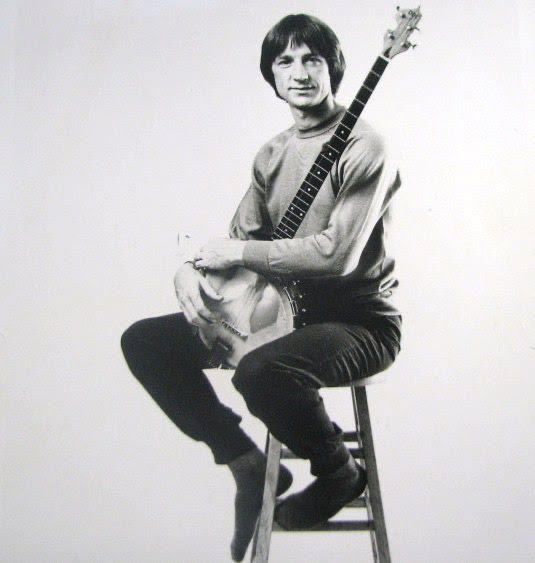

Peter Tork, early 1980s (photo 2 taken in Japan).
“In addition to the [Studio 19] club shows, Tork and his band will play Sunday night [March 21, 1982] at Peaches Records in Clearwater at 6:30, 7:30 and 8:30 p.m.
The Peaches shows were added because many of Tork’s fans are too young to be admitted into the club, said a spokesman for Studio 19.” - The Tampa Tribune, March 19, 1982
“Last weekend in Clearwater, Tork and his new band, The New Monks, broke up. Until then, his latest comeback attempt had been rolling along smoothly during the last 18 months.
[…] The breakup resulted from poor attendance at two Studio 19 concerts, an abruptly canceled canceled gig last Sunday and a flare-up resulting from an on-going friction between band and management, Tork said earlier this week.
‘It was the culmination of a long, slow descent,’ he explained. ‘It’s been a struggle. I thought things had been getting better.’
However, drummer Vince Barranco recently said that the band’s split-up is not final, just in limbo, pending working out problems with management.
‘Oh, it’s further out than limbo,’ Tork said. ‘The band is not intact, and not functioning.’
Calling from a pay phone at a YMCA in New York City, where he works out regularly, Tork said his trip to Florida, which coincided with the annual Monkees Fan Club Convention last week in Largo, has left him in less-than-enviable financial shape.
He said the band members claim they did not get paid for the Clearwater concerts.
‘I’m broke,’ he said flatly. ‘I cannot buy a sandwich. Well, I can, but it’ll stop me from eating for two days.’
Tork said only bass player Paul Ill has served official notice of quitting the band. The rest are ‘not too anxious to get back to work,’ he said.
Barranco, pianist Tom Myers and guitarist Phil Simon remained in Clearwater last week waiting to get paid for last weekend’s concerts from the promoter, Barranco said, adding that the break-up is not based on personal hostilities.
‘Peter’s a nice guy and all,’ Barranco said. ‘It’s strictly business.
‘I’m game (to rejoin) if everything’s comfortable,’ he said, noting relations between management and band members would first have to be cleared up.
[…] ‘When I left the Monkees, I found that I was not grounded,’ [Tork] said, referring to his lack of dues-paying and basic music industry know-how.
‘I wanted to learn the trade from the bottom to the top. In California, you can’t do that — there’s no middle ground.’
The small turnout at the Clearwater shows made him question his career direction.
‘I asked myself, “Do I not draw?” Maybe I overplayed my own value,’ he mused, ‘or maybe it’s Reaganomics.’
Due to cost of traveling, The New Monks have been giving small, well-received performances only in Boston, New Jersey and New York, shows featuring Tork on banjo and guitar.
[…] ‘Some reviews said “don’t do any Monkees material,“ some said “do only Monkees material,”’ Tork said. ‘We decided to call our own shots, but we don’t have enough consistency or experience.’’
[…]
[During Monkeemania] separating the musicians from the characters on the show was almost impossible. Cast as the dunce, Tork’s character undermined his formidable musical talent.
‘The Peter Tork character reached a lot of people,‘ he said. ‘He was an outcast — he lurched around, not getting hurt by his own bumbling idiocy.’
The character had a built-in protection system — that dumbfounded, naive look — that appealed to everyone, he said.
One of Tork’s fondest Monkee memories came during a break in the filming for the pilot of their first TV episode, in which they had been pretending to play instruments.
‘We got them to give us power in the amps and we just started playing,’ he recalled, ‘and everybody started dancing.’
However, Tork is most proud of the second stage [of Monkees history], circa 1967. On ‘Headquarters,’ their third album, the group, for the first time, played almost all of the instruments.
Other personal favorites from that period include ‘Pleasant Valley Sunday’ and ‘Goin’ Down,’ a one-take jam released only on the flip side of ‘Daydream Believer.
’ […] [I]n 1978, Tork started easing back into show business, circulating his picture in hopes of landing a spot on a sit-com but drawing few offers.
After a brief stint as a strictly oldies act, he founded The New Monks, ‘and now here I am, broke in New York City,’ he said.
But the 38-year-old [sic] singer is far from calling it quits.
‘I’m going to keep plugging,‘ he vowed. ‘I’m not done — this is my craft, my trade.’” - The Tampa Tribune, March 27, 1982
#Peter Tork#Tork quotes#The New Monks#80s Tork#The Monkees#Monkees#Peter deserved better#long read#'I'm going to keep plugging'#so much respect for PT#Headquarters#et al#<3#been typing up a lot of interviews/articles so long reads will be frequent#love his mind#1981#1982#Tork reviews#The Tampa Tribune#can you queue it
25 notes
·
View notes
Text

The Tampa Tribune, Florida, August 2, 1938
871 notes
·
View notes
Note
I like how anon makes it sound like you said pedophilia was okay when what you said was you didn't care what people write about fictional characters. Amazing
so what's being employed there is an extremely common tactic used by people trying to make their opposition sound like they're doing something that no reasonable person would agree with. accusations of pedophilia are extremely popular for this, since it's an issue that most people, understandably, are extremely opposed to and disgusted by, and very few people want to publicly label themselves as "guy who thinks pedophilia is fine." it's a tactic designed to put people on the defensive and (ideally) isolate them from potential support, which fortunately doesn't work on me because I'm not apologizing for something that wasn't wrong and I don't care who on this hellsite likes me.
it's the motivation behind the right's recently rekindled (although never entirely vanished) obsession with portraying trans people and drag performers, other queer people, and queer-friendly educators generally, as groomers who want to give children forbidden knowledge about sex that their parents don't approve of.
in the particular instance you're referencing, re: my anon, people will level accusations of "pedophilia" at fiction depicting anything from an adult sexually assaulting a child to two teenagers consensually having sex to someone in their 20s consensually hooking up with someone in their 40s. only one of those things - the first - is actually a depiction of pedophilia, and all three are things that people are perfectly allowed to write about without having to go before a tribunal to prove that their intentions are pure. it's also just fucking baffling to me that this is only applied to depictions of sex; if you assumed that every fictional depiction of murder or violence is an admission of actual desire to do such thing, writers would be getting rounded up in droves.
this hardly needs to be said, but: yes, I do find ring cameras - surveillance technology owned by a deeply evil megacorporation that abuses the rights of its employees and freely turns over camera footage to police - more objectionable than Octavia Butler's Parable of the Sower or Vladimir Nabokov's Lolita or Alissa Nutting's Tampa or any other fictional depictions of sex, because a book doesn't harm anyone and surveillance state police collusion does.
as someone lucky enough to teach youth sex education, with sessions focused especially on media literacy, teaching the self-advocacy skills to recognize potentially unsafe situations and the right to tell adults no, and emphasizing bodily autonomy, the entire thing is exhausting. which is the point, they very much want you to get so tired that you just stop saying anything, but once again I am an insane bitch who thrives on negativity so I shan't be stopping any time soon.
201 notes
·
View notes
Text
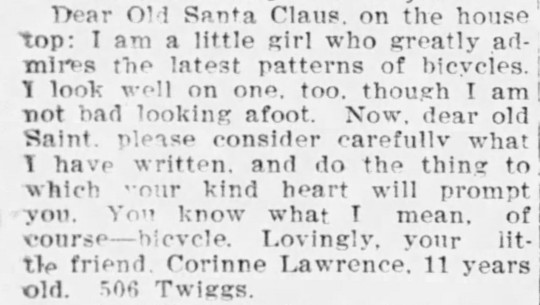
I will never be as charismatic as this child.
(source: The Tampa Tribune, December 22, 1901.)
#nat 20 on her persuasion roll#oddly enough corinne is buried in a cemetery that I've done extensive documentation work for#though I work primarily with unmarked burials so I'm not terribly familiar with the section she's in#dear santa#kids#1900s#bicycles#florida#tampa#history
392 notes
·
View notes
Text





March 20, 1976
Alive! Tour
Lakeland Civic Center - Lakeland, Florida
Some photos by Chip Rock.
About 21 people were arrested during this concert, from offences including drugs possession, concealed weapons, public intoxication to “stealing gasoline from cars” (Tampa Tribune, 3/22/76).
21 notes
·
View notes
Text
Bluey’s School (Glasshouse School) (2/?)
References in this post are primarily from this link: https://academics.hamilton.edu/government/dparis/govt375/spring97/Teacher_Training/tt4.html
Waldorf Schools
Any episode that includes Bluey’s school… right away you can tell that it is an atypical school. It is: it’s a Waldorf school. The teaching style, curriculum, etc. are all distinct from standard approaches.

Here’s a deep dive on this based on some online research…
Rudolf Steiner, the founder of the first Waldorf school in Germany in 1919, believed that all children should be given "individualized" attention (rather than just those with special needs.)

This style of education emphasizes a focus on the 'individual' rather than the 'group', with each child being valued for their individual accomplishments: every child is deserving of the same attention typically given to gifted and learning-disabled students in conventional educational streams.

Classes within these schools are structured in a unique system of "blocks" that focus on particular areas of study for a period of three to four weeks rather than the same subjects for the whole school year or semester.
As children grow older, more concrete and technical areas of subjects are introduced. Through this method, not only are the developing child's needs met, but so are their interests. As a result, students are kept actively engaged.
Features of this style of education
Key elements of the Waldorf educational approach include:
Teachers try to fully engage the individual student at each step by gearing the curriculum to their age and needs.
Teachers focus on the child's learning processes and achievements in all areas, not just the academic. In this way, the children can be developed as complete human beings.
Waldorf classrooms don't include computers, televisions, etc. Note how in “Typewriter”, Bluey thinks she needs a typewriter for a story but her teacher takes the focus off of typing a story and onto Bluey and her friends actually having an adventure.

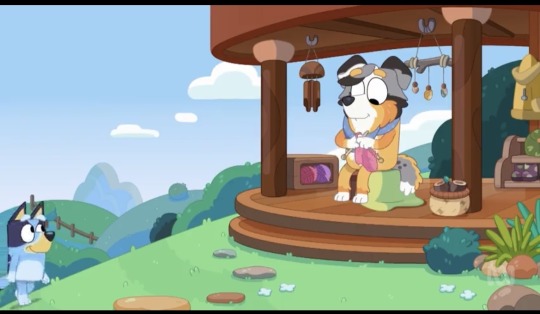
The Waldorf curriculum integrates arts and music into all areas of study. Daily activities include drawing, painting, singing, instrument playing…
Even the aesthetic atmosphere of the classroom is different to a standard school: The Tampa Tribune described a Waldorf school setting: "Imagine a classroom with old wooden tables, a backyard garden and children learning to knit and crochet. Where art and music is intertwined with every subject, students write their own textbooks and the toys are all handmade". Which is definitely the look/feel in Bluey’s school…


Additionally, a tenet of this style of education is that a focus on art and nature in education can lead to a greater appreciation for the beauty of life later on.

Waldorf schools encourage children to keep working on their imagination skills beyond kindergarten, using these skills to learn how to co-operate, share and interact. This concept of letting children progress into adulthood at their own level is a unique cornerstone of the Waldorf education method.

This concept of letting children progress into adulthood at their own level is a unique cornerstone of the Waldorf education method. This last piece is very key -- we seldom see anything being taught to the children; they’re free to do their own thing, make up activities, interact with one another, problem-solve, etc. and Calypso is there to gently guide them towards solutions occasionally.
So Why is This in “Bluey”?
The show “Bluey” is somewhat based on the show’s creator, Joe Brumm’s life experiences as a parent. Joe Brumm chose to have his daughter educated this way after she started the first grade. This is explained by Joe Brumm in an interview with the website The Father Hood:
"Bluey was still in embryonic form when Brumm’s eldest daughter started school. Her experience changed the course of the show.
'Play time was suddenly taken away from her, it was just yanked and seeing the difference in her was horrendous,' he says. 'There was no playing, there was no drawing, it was just straight into all this academic stuff. And the light in her eyes just died.'
Brumm researched alternatives for schooling and researched the value of play for child development. It is said that this is what led him to select Waldorf-style education for his daughter.
'Bluey is just one long extrapolation of that,' Brumm says. 'It’s to encourage people to look at play not just as kids mucking around, but as a really critical stage in their development that, I think, we overlook at their peril.'
Quotes from Joe Brumm from this link:
Closing comment & a caution
Personally, I think it’s interesting to see a different approach of educating children depicted in a TV show. It’s not “oddball”, it’s just a part of these dog-children’s lives.
I feel like the public is exposed to a lot of examples of children’s education on television and it’s generally portrayed in a negative light: e.g. The Simpsons, Bob’s Burgers… and even on shows like “Arthur” the kids were often complaining about school, or having something unpleasant/stressful take place while at school.

My only concern for Bluey and her classmates (and maybe it’s a long-term issue, nothing to worry about in the short term) is this: a potential downside to a Waldorf-style education would potentially be the sharp adjustment a student will encounter transitioning from this nurturing environment to one where that isn’t the case. It could well be unsettling.
…phew, ok, maybe one or two more posts about the school to come.
(Maybe, because of the source material, some of this post may sound a little like a giant sales pitch… it’s not meant to be. I think it’s interesting because it’s different; something else to learn about, etc.)
68 notes
·
View notes
Text
The August, '56 Florida tour was wild! ❤️🔥✨
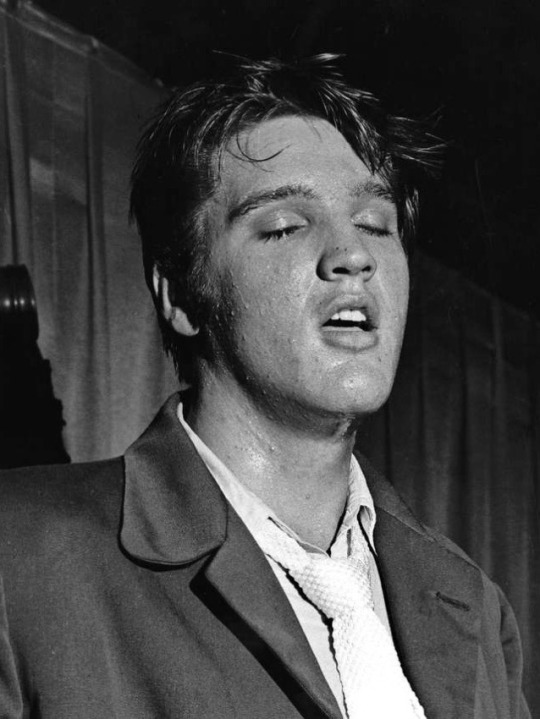
Elvis photographed by Bob Moreland at the Fort Homer W. Hesterly Armory in Tampa, FL, on Sunday, August 5, 1956.

Elvis photographed by Bruce (or Harry as the newspaper reads?) Roberts during a performance at the Armory in Tampa, FL, August 5, 1956 (One of my favorite pictures of EP ever!).


Tampa Tribune, August 12, 1956 - Jacksonville, Florida, 1956
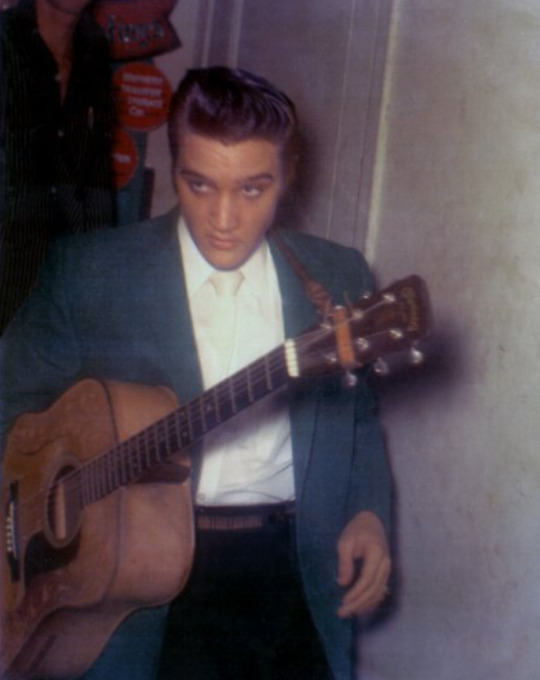
Elvis heading onstage at the Fort Homer W. Hesterly Armory, Tampa, FL - Aug. 5, 1956 Photo by Bob Moreland.
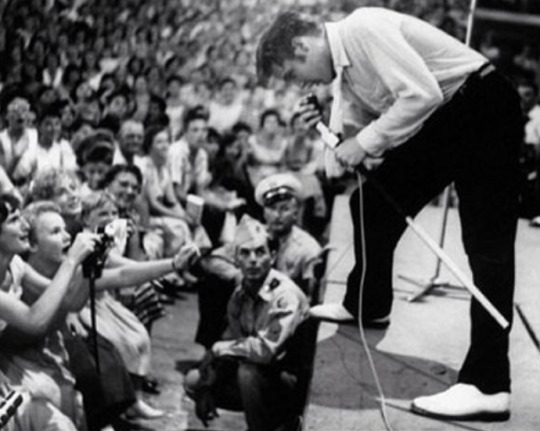

Look at the girl at the front row all flustered, trying to touch him. The desperation in her eyes, I can almost hear the screams/cries!
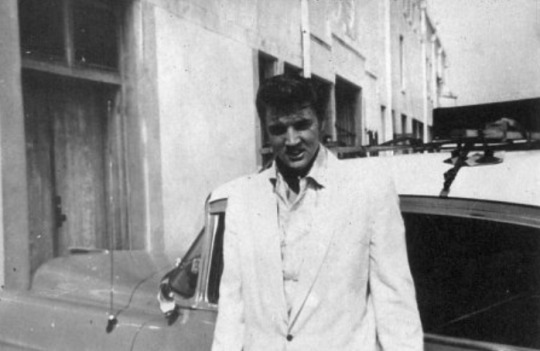
Last but not least, just because he's cute, look Elvis at the same venue, just a little more than a year previously. He's outside Fort Homer W. Hesterly Armory, Tampa, FL May 8, 1955.
There's these two moments where I wish I could attend an Elvis concert the most: anywhere/anytime in '72 and August, '56 in Florida. 🥹 Being born 18 years after he was no longer walking on this Earth, I feel so unlucky when I look at those pictures. I would really trade my youth for one single moment watching Elvis, even if "only" onstage for 30-50 minutes. Lucky the ones who got to experience this.
#trade my youth for a moment with you#this earth is no longer fun living in anyway#this Christmas i wished being a girl in the 50's US#just for a day... or 7 years. Then I would travel to late 60s and live each day 'til the first half of the 70's... over and over again.#Elvis and all his grandiosity#oh goodness#look at him!#i almost pass out just with the picture#sad about being born late#i would definitely be one of those screaming girls#imagine how it felt being there in the audience#no wonder parents worried haha#elvis presley#elvis the king#elvis fans#elvis fandom#50s elvis#elvis history#the wildness captured in his body language
13 notes
·
View notes
Text
New My Little Pony: Make Your Mark Vol. 1: Big Horseshoes to Fill Book
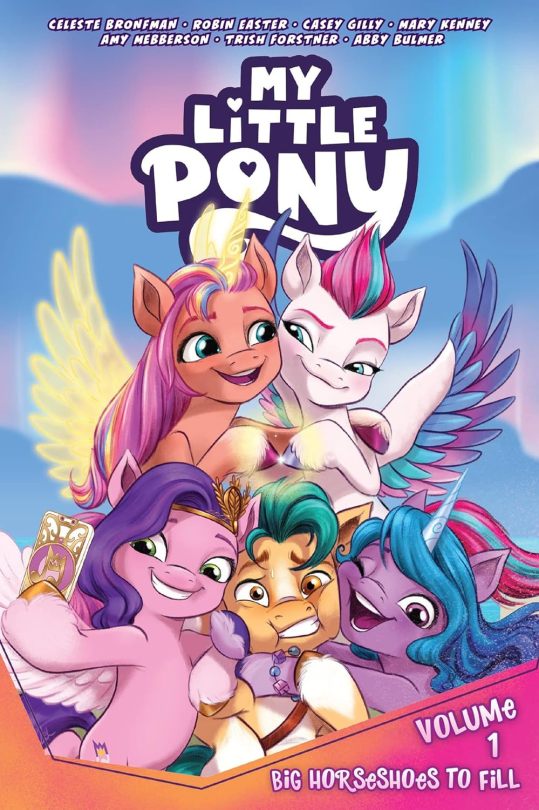
New My Little Pony: Make Your Mark Vol. 1: Big Horseshoes to Fill Book available here: https://amzn.to/3TTaIuk
Details below:
With magic returned to Equestria, the ponies are more united than ever—at least, until one of the Unity Crystals is stolen! Can Sunny, Izzy, Zipp, Pipp, and Hitch—plus trusty sidekick Cloudpuff—find the culprit before magic is gone for good? And where's Cloudpuff leading them, anyway? Is this...Canterlot?!
Explore a new generation of magic and friendship, from writers Celeste Bronfman, Robin Easter, Casey Gilly, and Mary Kenney, with art by Amy Mebberson, Trish Forstner, and Abby Bulmer! Collects My Little Pony #1-5.
About the first author: Celeste Bronfman is an award winning, Los Angeles-based writer whose recent credits include the Emmy-award winning series Degrassi and Discovery Kids’ Big Top Academy. In addition to her television work, Celeste is a comic book writer who has written for titles such as Star Trek, My Little Pony, and The Rivers of London.
About the second author: Mary Kenney is a writer of video games, comics, a YA nonfiction novel, and way too many tweets. An Advanced Writer at Insomniac Games, she also teaches narrative design at Indiana University. A graduate of the NYU Tisch School of the Arts, her journalsim has appeared in The New York Times, Salon, Kotaku, The Tampa Bay Times, and The San Diego Union-Tribune. She's lived in Chicago, NYC, the San Francisco Bay area, Los Angeles, and Hyderabad, India.
Perfect gift for any My Little Pony fan!
Features a Vol. 1: Big Horseshoes to Fill book.
Publisher: IDW Publishing (April 4, 2023)
Language: English
Paperback: 120 pages
Brand: My Little Pony
Character: My Little Pony
Color: Multicolor
Dimensions: 6 x 0.23 x 8.94 inches
Item Weight: 8.4 ounces
Reading age: 9 - 12 years
Grade level: 4 - 7
Inspired by My Little Pony: Make Your Mark
#mlp#mlp the movie#mlp merch#my little pony#my little pony: friendship is magic#equestria girls#my little pony: pony life#my little pony: a new generation#my little pony: make your mark#my little pony: tell your tale#the mane 5#Vol. 1: Big Horseshoes to Fill Book
2 notes
·
View notes
Photo

I found this glorious notice in the archives of the Tampa Tribune, March 6, 1914.
The chicken left his head and his heart on the dancefloor.
33 notes
·
View notes
Text

The Tampa Tribune
Tampa, Florida
Tue, Feb. 22, 1966
Page 16
5 notes
·
View notes
Text

Review of "The Singing Saw at Christmastime" in the Tampa Tribune, 28 November 2008
transcript:
JULIAN KOSTER: THE SINGING SAW AT CHRISTMASTIME (MERGE)
Former Tampa scenester and incurable musical iconoclast Julian Koster serves up a dozen choice, um, cuts on this seasonal showcase for the humble titular idiophone. The track list sticks to familiar classics, each given a spare arrangement that sounds like a gentle wind whistling through bare winter branches. It’s ethereal, at times haunting, and guaranteed to sound like nothing else in your holiday music collection. (RJ)
Download this: “Hark! The Herald Angels Sing”
3 notes
·
View notes
Text

From Rave, July 1967.
"Cast as the dunce, Tork’s character undermined his formidable musical talent.
‘The Peter Tork character reached a lot of people,‘ he said. ‘He was an outcast — he lurched around, not getting hurt by his own bumbling idiocy.’
The character had a built-in protection system — that dumbfounded, naive look — that appealed to everyone, he said.
One of Tork’s fondest Monkee memories came during a break in the filming for the pilot of their first TV episode, in which they had been pretending to play instruments.
‘We got them to give us power in the amps and we just started playing,’ he recalled, ‘and everybody started dancing.’
However, Tork is most proud of the second stage [of Monkees history], circa 1967. On ‘Headquarters,’ their third album, the group, for the first time, played almost all of the instruments.
Other personal favorites from that period include ‘Pleasant Valley Sunday’ and ‘Goin’ Down,’ a one-take jam released only on the flip side of ‘Daydream Believer.’" - The Tampa Tribune, March 27, 1982
20 notes
·
View notes
Text

The Tampa Tribune, Florida, July 23, 1915
892 notes
·
View notes
Photo


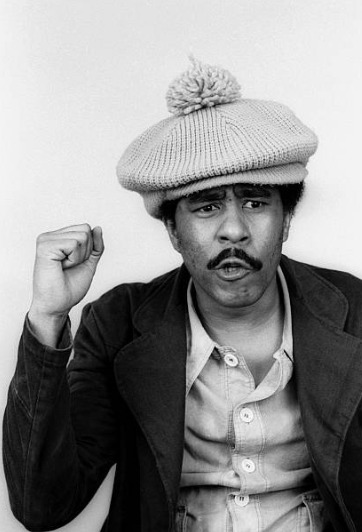


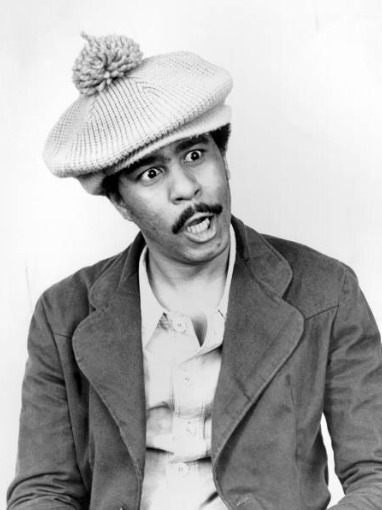

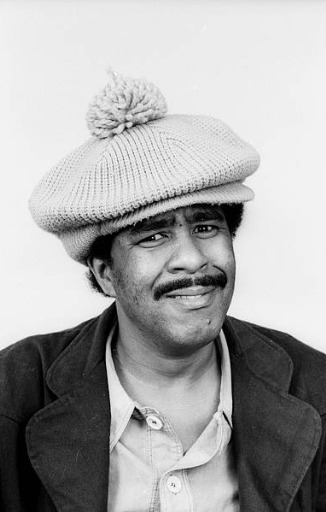
A racist letter to the editor in the December 22, 1977 edition of the Tampa Tribune condemned Richard Pryor’s “anti-white venom.”
3 notes
·
View notes
Text
“Alan is serious, straightforward, approaching interviewers like he does audiences: eyes straight ahead, standing like a soldier, and often looking as if he has just heard a joke he’s trying hard not to laugh at. If anything, he is more outgoing on stage, and the Bear loves to mock his singing voice.”
-The Tampa Tribune, Sept 6, 1969


#alan wilson#alan blind owl wilson#alan christie wilson#blind owl#canned heat#classic rock#blues rock#nerd love#27 club#bob the bear hite#woodstock#woodstock legends#harvey mandel#larry the mole taylor
5 notes
·
View notes
Photo



#31daysofgraves Day 24: mistake. At Woodlawn Cemetery, Tampa, Florida.
During his service in the Korean War, Umberto Romeo Rodriguez was severely wounded, but survived and returned home to become a police officer. Sadly, in 1969, he passed away from causes related to the wounds he had received. Because of this, he was officially added to the list of Korean War casualties. The Tampa Tribune reported that he'd died in North Korea, and then it was re-posted on findagrave.com, which led to a day of me being highly confused about how a Tampa police officer could have died in North Korea in 1969.
5 notes
·
View notes